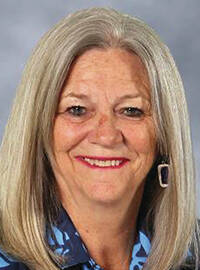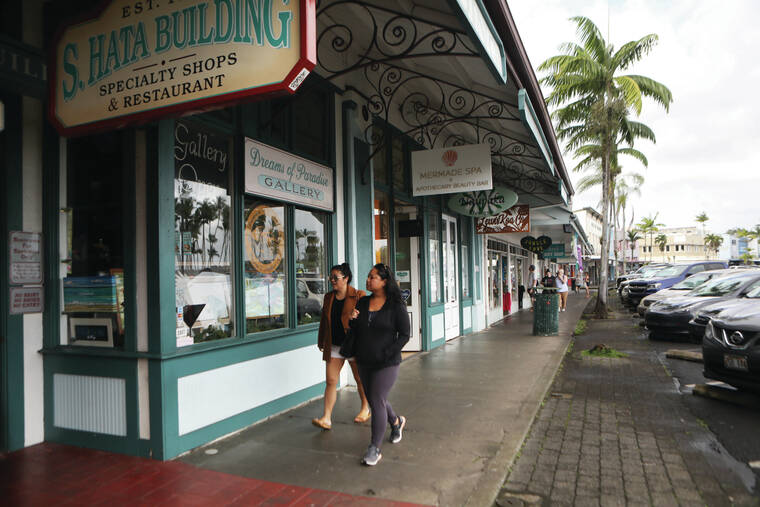Downtown Hilo business owners expressed strong opposition Tuesday to a proposal to create a business improvement district.
Modeled after a similar district in Kailua-Kona, the Downtown Hilo Business Improvement District is a long-gestating project that would help property owners finance infrastructure upgrades in the hopes of revitalizing the area.
But a Tuesday County Council special hearing about the project revealed significant resistance to the idea by tenants and property owners alike, all of whom agreed that the downtown is in dire need of improvement, but that the improvement district will hurt more than it will help.
“This bill is being composed by a group of individuals using a concept that may work in the Kona tourist district that they believe would work in Hilo,” said Lorraine Shin, who owns seven commercial properties in downtown Hilo. “Most people sitting on that group are not property owners in downtown Hilo. Hilo is very different from Kona, and we should not allow a small group of individuals to make decisions for the many businesses here.”
A major point of contention among the hearing’s several dozen attendees was the increased fees attached to the district. The district would operate by levying “special assessments” against member parcels at the rate of $1.50 per $1,000 of “total net taxable value.”
For some businesses, that assessment on top of increased expenses and taxes could present an intolerable burden.
Neerad Reddy, owner of Moonstruck Patisserie, said a 60% increase in property taxes last year after two years of stringent COVID-19 policies has left businesses struggling.
“I paid $5,520 in taxes on a building in 2021, and then I paid more than $10,000 on the same building in 2022,” said Teresa Prekaski, owner of six buildings downtown.
Similar complaints fueled a general sentiment among attendees that the county and state administrations largely have abandoned downtown Hilo. Several attendees were scornful of the idea that business owners might be asked to pay assessments to the district in order to combat homelessness, when the county and state have neglected the problem for years.
Nancy Cabral, president of Day-Lum Rentals and Management, said downtown Hilo stakeholders already pay taxes that should be funding much of the work that the proposed improvement district would do instead, such as landscaping, maintenance and better lighting and signage.
Cabral added that the increased fees imposed by the district will be passed from property owners to their tenants, and from the tenants to the customers, which she warned could lead to a reduction in business downtown.
Landlord George Hotniansky said the county hadn’t done enough to spread the word about Tuesday’s meeting among downtown businesses, ultimately leading to a standoff with council Chair Heather Kimball when he attempted to speak longer than his allotted time on behalf of a property owner who wasn’t able to attend. When Hotniansky wouldn’t cooperate, Kimball simply called for a 15-minute recess, eliciting jeers and boos from the attendees.
But most of all, attendees agreed that the prevalence of homeless people in downtown Hilo is the biggest problem facing the area. While none could agree upon a solution, many said any attempts to improve infrastructure would be pointless without first reducing the homeless presence.
Only a handful spoke in even neutral language about the improvement district concept. Realtor Garth Yamanaka recommended paring the proposal down so that it would simply form the district as an administrative body that could then vote for itself whether to proceed with other aspects of the proposal.
“If they vote no, then we just continue with how things are now,” Yamanaka said.
Matthias Kusch, a member of the improvement district steering committee, testified at Tuesday’s meeting and attempted to ameliorate other attendees’ concerns, explaining that the assessments paid by member businesses will not go to the county, but will go back to the district.
But most attendees remained unmoved, and Kimball eventually ordered him to stop addressing the attendees instead of the council members.
Kimball repeatedly said that the hearing’s purpose was to hear challenges and protests against the plan by stakeholders before the council can make a decision. In order to ensure that more people can weigh in on the matter, Kimball ultimately called for the meeting to be recessed and pick up again on Feb. 24.
Councilwoman Jenn Kagiwada, who represents downtown Hilo, said she felt the meeting was constructive despite the heightened emotions.
“People seem to be interested in talking to each other about it, and that’s a good thing,” Kagiwada told the Tribune-Herald on Wednesday, although she added that she expects there will be substantial changes made to the proposal, which likely will trigger another special hearing somewhere down the line.
Kagiwada added that this year is “maybe the most hopeful I’ve been about the homeless issue for years,” saying that the county has allocated $9 million per year for the next five years to address homelessness, and that Gov. Josh Green seems “particularly attuned to the issue.”
Email Michael Brestovansky at mbrestovansky@hawaiitribune-herald.com.











